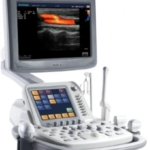- Pin BB 0123456789
- WhatsApp 1234567890
- Line 2345678901
Detail Produk
Kategori
:
LAIN-LAIN

-
S20, the newest color Doppler system from SonoScape, is specially designed for full ultrasound applications, including Radiology, Cardiovascular, OB/GYN and others. This system is featured with innovative ergonomic design, latest ultrasound technology and powerful workflow.As a workflow enhanced ultrasound systems, S20, combining 17″ monitor with smart touch panel together, will provide the most smoothly work flow which doctors have never experienced before. The high definition image quality is another strength for S20. Thanks to the innovative technologies, such as Multi-beam processing and μ-scan, the doctors will be confident for even toughest patients. So, from technology to imaging, from archiving to reporting, the S20’s innovation will bring all the best for clinical practice in everyday.
• 17″ high definition LCD monitor with large imaging area
• smart touch screen
• Four transducer sockets for a wide range of transducers: Convex, Phased, Linear, Transvaginal, Transrectal, Bi-plane, TEE, Endoscopic, Intraoperative, 4D
• High density transducers with frequency range from 1.9 to 15 MHz
• 200°transvaginal imaging with Temperature-detection technology
• Integrated with state-of-the-art technologies, like μ -scan, multiple-beam processing,IMT, B-Steer, automatic flow volume analysis
• Application: General, Radiology, Cardiology, OB/GYN, Urology, Vascular
• Full patient database solutions: DICOM3.0, AVI/JPG, USB2.0, HDD, DVD, PDF report
Full Range of Clinical Functions
♦ Liver
The ultrasonic examination of liver is a relatively high informative method. The doctor evaluates the dimensions of the liver, its structure and homogeneity, local disturbances as well as the blood flow condition. The ultrasonic examination allows to detect both diffusive changes in the liver (liver steatosis, chronic active liver disease, cirrhosis) and local (fluid formalities and tumor mass).
The ultrasonic examination of liver is a relatively high informative method. The doctor evaluates the dimensions of the liver, its structure and homogeneity, local disturbances as well as the blood flow condition. The ultrasonic examination allows to detect both diffusive changes in the liver (liver steatosis, chronic active liver disease, cirrhosis) and local (fluid formalities and tumor mass).
-
♦ The gall bladder and bile passages
Besides the liver itself, the state of gall bladder and bile passages is also examined: their dimensions, the thickness of the paries, patency, the presence of concrements, the state of the connective tissue.
In most cases the ultrasonic examination allows to detect the concrements in the gall.
-
♦ Pancreatic gland
During the examination of the pancreatic gland the doctors can evaluate its dimensions, form, boundaries, homogeneity of parenchyma, the presence of formalities.
-
♦ Kidney and atrabiliary capsules, retroperitoneal space
During the examination of the kidney the doctors evaluate their number, arrangement, dimensions, form, boundaries, structure of parenchyma and pelvicalyceal system. The ultrasonic examination allows to detect the anomalies of the kidney, the presence of concrements, fluid formalities and tumor mass as well as changes resulting from inveterate and pathological lancinating processes in kidney. The ultrasonic examination can be used for detection of the indication of intestinal obstruction and indirect indication of adhesive process. With the help of ultrasonic examination the doctor can detect the presence of free liquid in the abdominal cavity (if it is in a great number) that can play an important role in the treatment policy of a number of therapeutic and surgical disorders and injuries.
-
♦ Thyroid gland
The ultrasonic examination is the crucial in the examination of the thyroid gland because it allows to detect the presence of ganglions, hydatids, the changes in the dimensions and structure.
-
♦ Cardiology, cardiosurgery
Echocardiography is the ultrasonic diagnostics of the heart diseases. This examination evaluates the dimensions of the heart and its particular structures (ventricle of the heart, auricle, ventricular septum,
thickness of ventricular myocardium, auricle etc.) the presence and the volume of fluid in the pericard – “pericardial sac”, the state of the valves. With the help of special calculations and sizing echocardiology allows to detect the heart mass, contractility of the heart – ejection fraction, etc. There are special guides that help to observe during the operation the state of the mitral valve situated between the ventricle and auricle.
- ♦ Tocology, gynecology, prenatal diagnostics
- The ultrasonic examination is used for examination of the internal female genital neoplasms, the state of the gravid uterus, anatomy and monitoring of the Embryo-fetal development. This effect is widely used in the tocology because the sound from the venter can be easily registered. At early stages of pregnancy the sound gets through the bladder. When the venter is filled with the fluid it starts to conduct the sound. The position of the placenta is detected by the sounds of blood getting through it, and within 9-10 weeks from the moment of the fetation the doctor can listen to the beating of its heart. The number of foetuses and the death of the foetus can be detected with the help of ultrasound examination
-
♦ Muscle and skeletal examinations
The ultrasonic examination is used to detect traumatic injuries and inflammatory disease of joints (shoulder, knee, etc.), muscles, bands, meniscus, chorda, arthrosis.
Tidak ada produk berkaitan.
Tidak ada produk popular.




